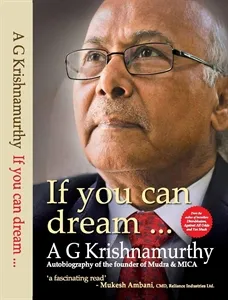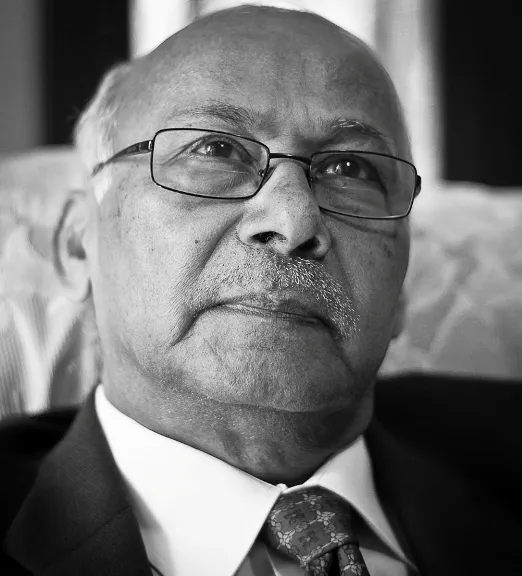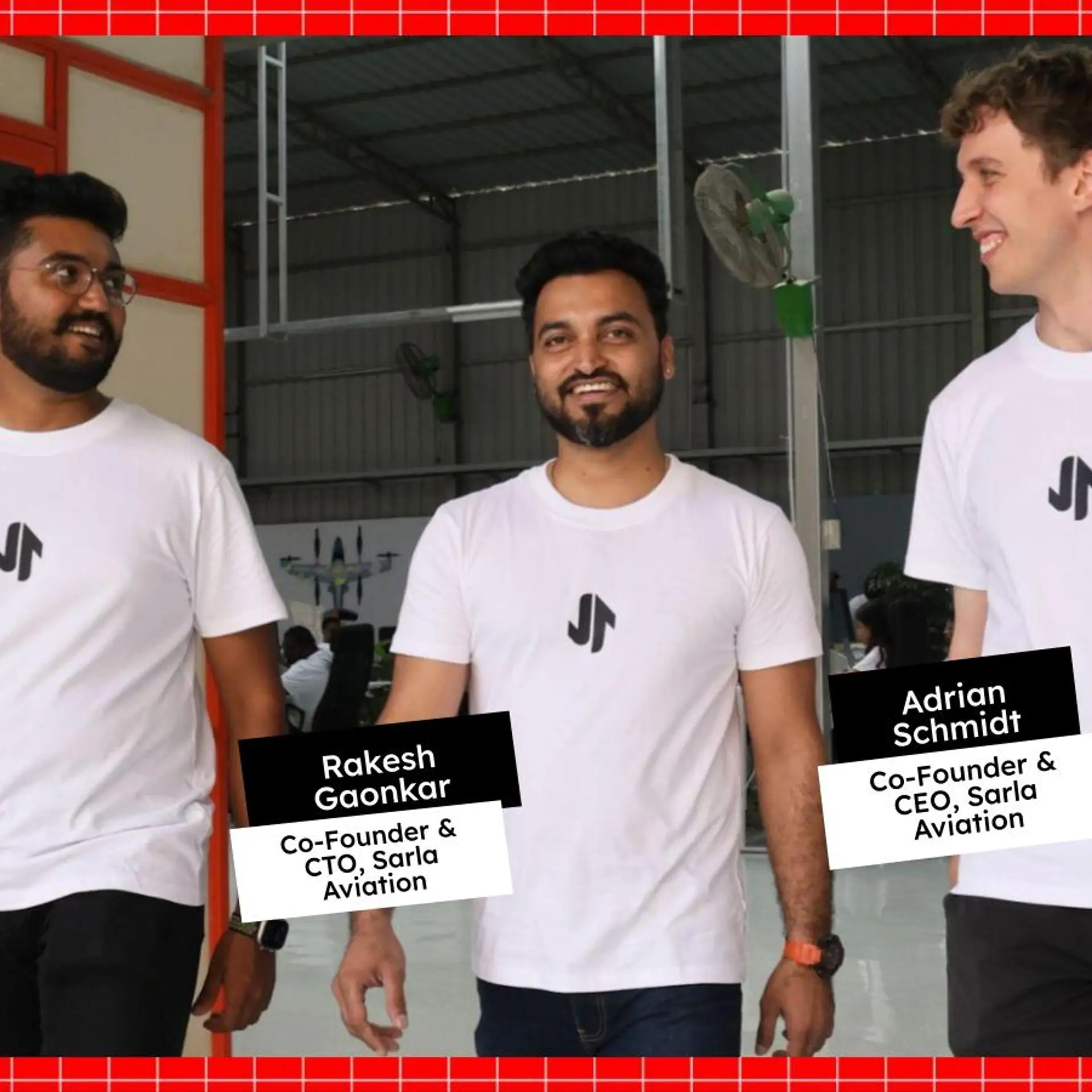A small-town man's journey from starting up to building a INR 7 billion advertising empire: AG Krishnamurthy, Founder, Mudra & MICA
On 25th of March 1980, AG Krishnamurthy founded Mudra Communications with INR 35000 and one client. In 1989, precisely 9 years after its establishment, Mudra became India's 3rd largest advertising agency in the country. And, in about a decade from its inception, it was a mammoth in the industry.
From beginning his career with Calico mills, Ahmedabad’s largest textile set-up in the late 60s to starting up his own business venture, Mudra, and academic venture, MICA (Mudra Institute of Communications, Ahmedabad), AGK Sir’s (as he’s fondly known) journey is a dream in itself.
YourStory got in touch with him on 29th April 2013, the day when he released his autobiography “If you can dream…”: a compilation of factual and emotional treasures that went behind creating two great brands: Mudra and MICA.
[Edited Excerpts]

YS: You started Mudra with 35000...what was the initial time like?
AGK: (laughs) Confusing. There was a lot of confusion because we had a huge mandate from Dhirubhai Ambani. And the mandate was to produce the best possible advertising in textiles, for Vimal. The office was set up in Ahmedabad, my choice, not his, because you know, I love the place, I love the culture here, I like everything about Ahmedabad, and didn't want to move out of the place. Although Mumbai was (still is) considered to be the Mecca of advertising, for my kind of life style it was far too westernized and I did not want to be part of it.
I am a small town man; I have a huge respect for India, Indian people, Indian languages, and Indianness as a whole. So I thought if I was going to create advertising for an Indian brand and for Indians, it better had Indianness written all over it.. So with a thought process like this, I decided to set shop in Ahmedabad, which was a desi kind of a city at that time. Desi agency by desi people for desi brands, which were soon to become iconic.
The initial confusion happened because we started the agency with a lofty goal of making Vimal the country’s No.1 brand, and Indianness as a way of life. The problem was that all support services needed for an advertising agency were to be found only in Mumbai. No writers, no models, no photographers, no ad film makers – literally nothing was available in Ahmedabad which are the lifelines of an ad agency. On top of thjs, an organizational and creative philosophy which was diametrically opposite to what was practiced then.
These formed the set of initial hurdles that the Mudra team had to face.
YS: What gave you the idea of setting up MICA? What was the vision then?
AGK: By 1989, Mudra had become the third largest agency in the country. It is a phenomenal growth for any advertising agency in India, and that too, for any agency situated outside of Mumbai. So for a regional advertising agency to become a national player, and that too the third largest in the country was not a small achievement. In fact it never happened before or after.
Now when we talk about Indianness, gratitude is an integral part of Indianness. We develop a sense of gratitude and believe in paying back our benefactors. We don’t bite the hand that fed us. In a short span of nine years, Mudra grew so rapidly that we thought that we owe something to the Indian advertising industry. We wanted to pay back. So on one side was this huge sense of gratitude to pay back, and on the other side the industry was supposed to be some 2000 crore in 1990, which was huge and there was no regular supply of trained entry level talent, which was really a big problem. The ad agencies had to go to business schools, recruit regular business graduates and then spend time and effort in training them on the job. Advertising was not a major subject in any of the prominent business schools, and the industry severely lacked specialized talent.
Along with the fact that there was a need for talent, another issue needed to be addressed: high rate of attrition. It was like “I pinch you-you pinch me” kind of scenario, hurting the agencies as well the clients. Just imagine when a particular set of people who worked on a brand for, say 2 or 3 years, suddenly left the ad agency – it is a major problem for both the ad agency and the client. Agency and client teams develop comfort zones, share brand knowledge and plans – then suddenly the agency team leaves, it was truly disturbing. I have seen this happening a lot of times in my career, and it was really unnerving.
So all of this: the lack of talent, the attrition, and the undying desire to pay back to the industry, was what led to the formation of MICA.
YS: You started AGK Brand Consult after Omnicom acquired Mudra...what does it feel like starting all over?
AGK: AGK Brand Consult was started soon after I left Mudra in March 2003. It had nothing to do with the Omnicom acquisition of Mudra.
When I started Mudra, it was not just a full time job, it became my mission in life. A passion and a whole time commitment. My life was dedicated to it. In the beginning, for the first nine or ten years, I used to go to work at nine o'clock in the morning, and return home at 12 in the night, every day of the week.. On Sunday I used to work half a day. Mudra had become our only life.
So I thought, there must be a life beyond Mudra. There was life before Mudra, I wasn't born with Mudra, nor am I going to die with Mudra. I decided to explore my other interests such as working with some NGOs, writing, etc.. I set up my consultancy that enabled me to spend some time with my family and also allowed me to pursue my other interests such as writing and working with a couple of NGOs.
Re. consultancy, I do very selective work. I don't take up every single assignment that comes my way. I pick and choose a handful of brands and advise them on various issues.

YS: As an entrepreneur yourself, what are the 3 advices that you would like to give to young entrepreneurs?
AGK: I think it's a very important question.
Number one: You need to have a really clear understanding about the need-gap in the market and what do you want to provide. In marketing two approaches exist: Value for Money or Value Add. There should be clarity on this when you get into business. You want to innovate and push the envelope, or offer parity products/services at lower prices? Create new markets or expand markets?
Number two: You must be very clear about your target customer. Who is going to buy your services and products? Why? How do you reach them? It is because you can’t reach every person in the world, this becomes very necessary.
Number three: Resources?
These three questions you should put on a piece of paper and try to answer them, then you get a business model.
In the technology space, a lot of young people come to me quite often and say that “I got a great idea, can I help them?”; I ask three questions: “who will buy this?”, “why will they buy this?”, “do you have the necessary financial muscle?”. Normally, the answers are negative. Then I tell them, dreams are very expensive. Big money is involved - you’ve to have deep pockets, and for 2-3 years you have to see whether an idea's working or not. Reason why, entrepreneurs need to develop a rational approach to their business. The Whos, Whys, Wheres need to be answered before venturing into business.
On a concluding note he says, “Most products don’t fail because of lack of quality, products fail because of lack of proper marketing strategy and muscle.”
Those interested in buying the book online can check the two price comparison startups: ThisYaThat and KBookSearch!







